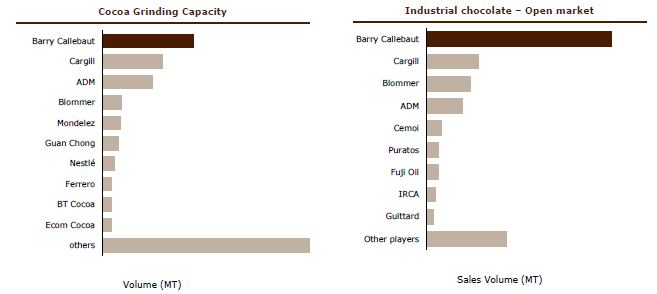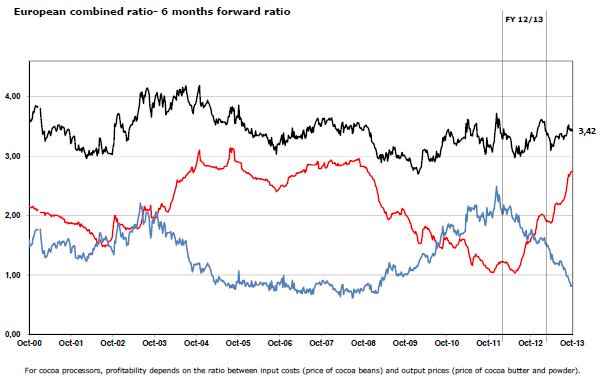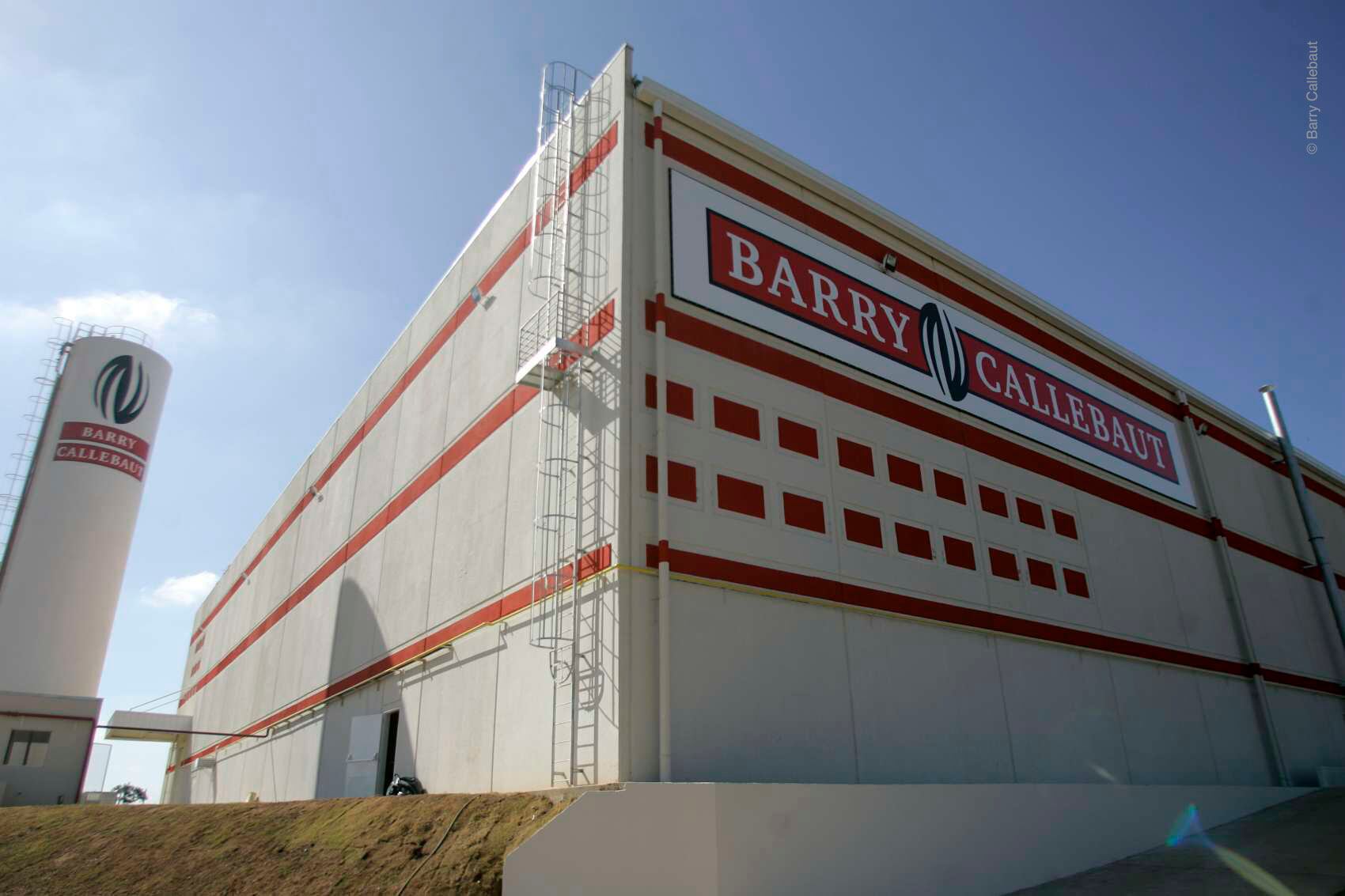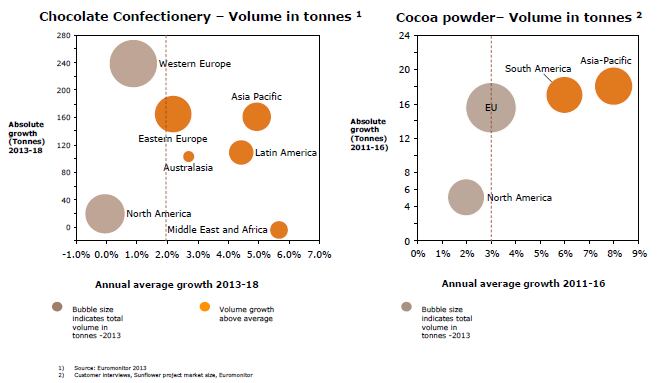The firm’s net profit was down 4.9% to CHF 229.3m ($251m), while sales revenues rose 1.1% to 4.9bn CHF ($5.3bn).
Petra price dispute and integration
Barry Callebaut finalized the deal for Petra Foods’ cocoa processing operations in June 2013 and the business has now joined Callebaut’s Global Sourcing & Cocoa segment.
The purchase price however is still in dispute. Petra Foods has accused Barry Callebaut of ducking out on almost $100m as it seeks to lower the purchase price from $860m to around $762m, based on the value of Petra Foods’ assets.
Victor Balli, Barry Callebaut’s CFO, said during today’s media conference: “The purchase price was not based on performance but on asset values,” which he claimed were agreed to be finalized after the acquisition was complete.
“The outcome will in no way affect the Petra business,” he said. “We are in full control of the acquisition and it’s going exactly how we want.”
Callebaut expects Petra turnaround
Before Callebaut acquired the business, Petra Foods’ Ingredients division suffered a CHF 40m ($44m) EBIT loss in the first half of 2013. Callebaut expects the business to record EBIT profit of CHF 30m in fiscal 2013/14.
It said this would be achieved as the cocoa butter to cocoa powder ratio improved and it integrated the business into Barry Callebaut’s existing structures.
It expects to achieve around CHF 38m ($42m) of synergies, which not all will come in the first full year.

Cocoa ratios and shortages
In 2013, the chocolate and cocoa industry has seen a decline in cocoa powder demand, which has led to increased cocoa butter prices.
Juergen Steinemann, CEO of Barry Calelbaut said: “What we expect is that the situation will ease.”
The company expects cocoa butter prices will come down and powder prices rise.

The firm said there had been a recent rise in cocoa prices triggered by hedge funds and expectation of a slight shortage for the new crop year.
“The crop year has started very strong, but there is fear of a shortage,” said Steinemann.
The International Cocoa Organization (ICCO) previously told this site that the 2013/14 season would end in another small deficit after an estimated shortage of 52,000 MT in the previous year.
Supply chain inefficiencies

Steinemann said that the company experienced inefficiencies within its supply chain during the fiscal year, mainly due to capacity constraints.
In Asia for example, the company is moving to a new site in Japan, which has meant temporary loss of production volumes.
For the firm’s chocolate business it is a 95% capacity, above its target of between 82 and 85%. However, its cocoa business is within the company’s capacity target of 90-95%, currently at 92%.
Outlook for fiscal 2014
“We can see further room for growth,” said Steinemann.
Barry Callebaut expects between 6 and 8% volume growth per year until 2015/16 and forecasts that EBIT per MT volumes will return to pre-Petra acquisition levels (CHF 256/$281) in 2015/16.
The company said that an improved cocoa ratio, long-term outsourcing and strategic partnerships, such as existing deals with Mondelez, Unilever, Grupo Bimbo and Hershey and growth in emerging markets, particularly Asia and Latin America, would drive this growth.
Growth projections
According to Euromonitor International the chocolate confectionery industry is projected to grow volumes at a compound annual growth rate (CAGR) of 2% in the next 5 years (2013-18)
The Middle East and Africa is expected to grow the fastest, followed by Asia Pacific. Cocoa powder demand is expected to be strongest in Asia-Pacific with an annual average growth in volume terms of around 8% from 2011-16.

“We will now become a proactive seller of cocoa powder,” said Steinemann, after previously being only a tactical seller.
Barry Callebaut will also shift its sourcing from a West Africafocus to global origins by expanding in South America and Asia.
For the next fiscal year, the firm said it also expected a shift from new build factories to expansion of existing facilities.
